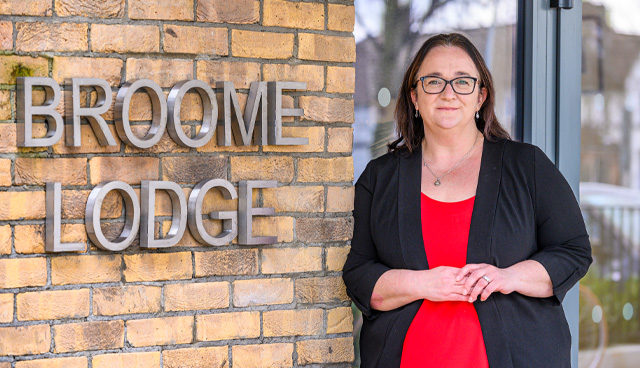
Committee on Housing, Local Government and Heritage work programme
1st June 2021
Covid-19 and construction
1st June 2021Investing in social housing: Protecting yield and managing risk

An increasingly diverse range of large-scale investors have been moving into Irish social housing at an accelerating pace over the past 24–36 months. It’s perceived to be “a hot space” because of the potential to achieve what are deemed by the market to be attractive long-term State-backed yields/returns for investors in a range of 3 per cent to 5 per cent, write Thomas O’Malley and Angelyn Rowan of Philip Lee.
To make it work these investors want to build scale and quickly. This has led to a focus on newly built schemes. In tandem, investors are seeking to build portfolios by acquiring and refurbishing existing stock to a standard acceptable to local authorities and meeting legislative standards under the Housing Acts. Notwithstanding the recent concerns about funds acquiring entire developments, thus limiting the supply of housing for first time buyers and others, the investment funds are delivering social housing at a pace that the State cannot match.
Investors are attracted by the Irish Government’s social housing leasing scheme (“leasing scheme”) because of the strength of the lessee covenant (i.e., local authorities in their capacity as housing authorities), which are supported through Government central funding through schemes that are dedicated to social housing, such as the Social Housing Current Expenditure Programme (SHCEP). In effect the leasing scheme is a 25-year commitment, supported by the Irish Government, to rent social housing. The rent is reviewed every three years and reviews are linked to the Harmonised Index of the Consumer Price Index, which is anticipated to protect the initial yield for the duration of the term.
There are a number of leasing models within the leasing scheme:
Standard lease: a landlord remains responsible for the maintenance of the roof and structure of the property with the tenant (local authority) being responsible for the internal maintenance/garden and the management of the occupiers with whom it enters into subleases. In a managed scheme, the repair obligation is assumed by the owner’s management company through collection of service charges. The standard lease will attract a rent level of circa 80/85 per cent of market rents. This model is also used for the development of an entire scheme of units. The entire scheme is leased under the leasing scheme, with the landlord assuming responsibility for the maintenance and cleaning of the external and internal common areas, which is akin to the obligations of an owner’s management company under the Multi-Unit Developments Act 2011.
Enhanced lease: the landlord assumes wider management and maintenance obligations with graded response times and other obligations in return for a higher rent of circa 95 per cent of market rent.
Investment in the leasing scheme is an asset class and investors are assessing various risks and means to minimise any risk to yields and thus protect the yield and their investment.
Identifying the key risks
The risks associated with property as an asset/investment class are well established and apply to the leasing scheme and include:
Acquisition: Acquiring a property is generally a straightforward process with lawyers retained to examine title and ensure that a good and marketable title is obtained or that there is clear path to remedying any deficiencies that emerge in the course of due diligence. The due diligence extends to planning and the capacity to implement permitted planning permissions in the case of undeveloped sites.
Getting an agreement for lease in place: An early risk in the process is the fact that while a local authority will typically confirm by email that it will lease housing units (existing stock or new builds) at an agreed rent there is a time lag in securing a binding contractual commitment (agreement for lease). Investors are typically proceeding to purchase on the understanding that a non-binding commitment will be fulfilled by the local authority entering into an agreement for lease subsequent to the property having been acquired. The fact that local authorities tend as a rule not to renege on their commitments is seen as a mitigating factor.
Asset management: Given the repair obligations in the leases, it’s key that investors have a robust asset management agreement in place with reputable suppliers. This will also be important in protecting value on a portfolio sale and in securing consent to an assignment.
Assignability of the leases: This has been the focus of much discussion/lobbying as investors want to be assured that there are no insurmountable obstacles to trading portfolios of properties under the leasing scheme. There is no bar to mortgaging/leveraging a portfolio by a landlord and this also applies to development finance where an agreement for lease is in place.
As this asset class has grown, portfolios of properties under the leasing scheme have been traded in the market and consent to such assignments have been forthcoming. The State are unwilling to cede to requests for unfettered rights of assignment as they want to know who the incoming landlord will be and the template lease sets out criteria that apply, notice of the proposed assignment, tax clearance, and generally that the proposed assignee is not involved in any criminal activity, sale of arms or weapons, or has been shown to be corrupt in its business activities.
Concerns have been expressed by debt funders in relation to the impact of a receiver appointment as a possible termination event, but it is expected any concerns on this will be addressed by an upcoming amendment to the template lease which will remove any doubts on this front so long as the receiver fulfils the landlord’s obligation.
Construction: In the case of newly built schemes the yield is predicated on the investor procuring a turn-key product from a contractor at a fixed price that the local authority will accept once completed. Robust construction contract documentation is essential to protect the investor from price variations and delay that would increase the delivery cost and thus impair yields. It is also essential that the documentation is back-to-back with the AFL requirements and that practical completion is linked to the property meeting the local authority’s requirements. Choosing the right contractor and design team members with the requisite experience and engaging an experienced project monitor to ensure delivery on time and within budget are key factors. Well designed and constructed housing will also be less costly to maintain into the future and protect the asset value.
Agreeing robust construction contract documentation at the outset is an important means through which the long-term yield can be protected. Construction contract documentation should address important issues, such as performance security, the regime for the remedying of defects post-practical completion, the duration of liability (typically 12 years post-practical completion), and the nature of and level of insurances to be maintained in the event of a claim for a latent or inherent defect. The market for professional indemnity insurance (which would normally be kept in place for an extended period post practical completion), is proving incredibly challenging for participants to maintain at a reasonable cost. Investors are increasingly looking at additional options to plug any potential gaps, including latent defects or enhanced structural defects insurance.
Tax: Consideration and specialist advices should be procured in respect of all tax heads at the point of establishing structures to hold investments under the leasing scheme.
Conclusion
Careful consideration and management of the risks linked with property ownership, development, and its ongoing maintenance and repair under the leasing scheme is required by those who want to build scale in the knowledge that they have taken all reasonable steps to protect the yield and their investment into the future. Appointing service providers and advisors who have deep knowledge of the sector is a key element. Those that manage risk and protect yields will thrive in a market that has a large appetite for the State-backed covenant and potential level of returns that are available under the leasing scheme. At the same time the State benefits from increased investment into the social housing sector thereby increasing much-needed housing supply.
Angelyn Rowan
E: arowan@philiplee.ie
Thomas O’Malley
E: tomalley@philiplee.ie
T: +353 1 237 3700
W: www.philiplee.ie







